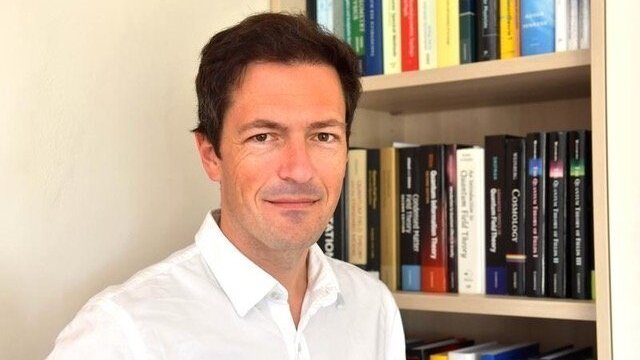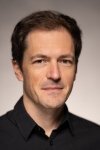
Prof. Stefan Flörchinger
Image: PrivateProf. Dr. Stefan FLÖRCHINGER
Email: stefan.floerchinger@uni-jena.de
Phone: +49 3641-9-47135
Research Areas
- Quantum field theory dynamics close-to but out-of thermal equilibrium
- Non-perturbative description of quantum field theory with functional renormalization group equations
- Relation between quantum field theory and relativistic fluid dynamics
- Quantum information and information geometry for quantum fields
- Quantum field simulation
- Ultra-cold quantum fluids
- High-energy nuclear collisions and the quark-gluon plasma
- Cosmology and large-scale structure formation
Teaching Fields
Prof. Flörchinger provides advanced theory courses, supporting the training of young developing researchers during their early project phases. He gives courses in:
- Quantum field theory and advanced quantum field theory
- Thermodynamics and statistical physics
Research Methods
Prof. Flörchinger develops and applies a wide range of analytical and numerical investigations with functional formulations of quantum theory.
Recent Research Results
Functional methods like effective actions and the renormalization group can be used to understand many properties of quantum field theories. This concerns information theoretic aspects like relative entropies or entanglement properties [1,2,3] as much as quantum correlation functions [4,5].
Interestingly, strongly interacting quantum fields can behave like a fluid. This is a useful approximation for high-energy collision experiments, in cosmology or condensed matter. As an example, we have theoretically investigated the production rates for photons from a quark-gluon plasma in this limit [6].
Because quantum field theories play such an important role in our modern understanding of physics, there is an interest to investigate them further through quantum simulation. We have worked out how this can be done for a quantum simulation of structure formation in the very early universe [7,8,9].
[1] S. Floerchinger, Phys. Lett. B 846, 138244 (2023).
[2] S. Floerchinger, Phys.Rev.D 110, 125027 (2024).
[3] M. Schröfl and S. Floerchinger, Phys. Rev. D 111, 025009 (2025).
[4] E. Oevermann, A. Koenigstein, and S. Floerchinger, Phys. Rev. D 111, 074006 (2025).
[5] P. Jentsch et al., Phys. Rev. D 105, 016028 (2022).
[6] S. Floerchinger et al., Phys. Lett. B 837, 137647 (2023).
[7] M. Tolosa-Simeón et al., Phys. Rev. A 106, 033313 (2022).
[8] C. Viermann et al., Nature 611, 7935, 260 (2022).
[9] M. Tolosa-Simeón, M. M. Scherer, and S. Floerchinger, Phys. Rev. B 110, 085421 (2024).
